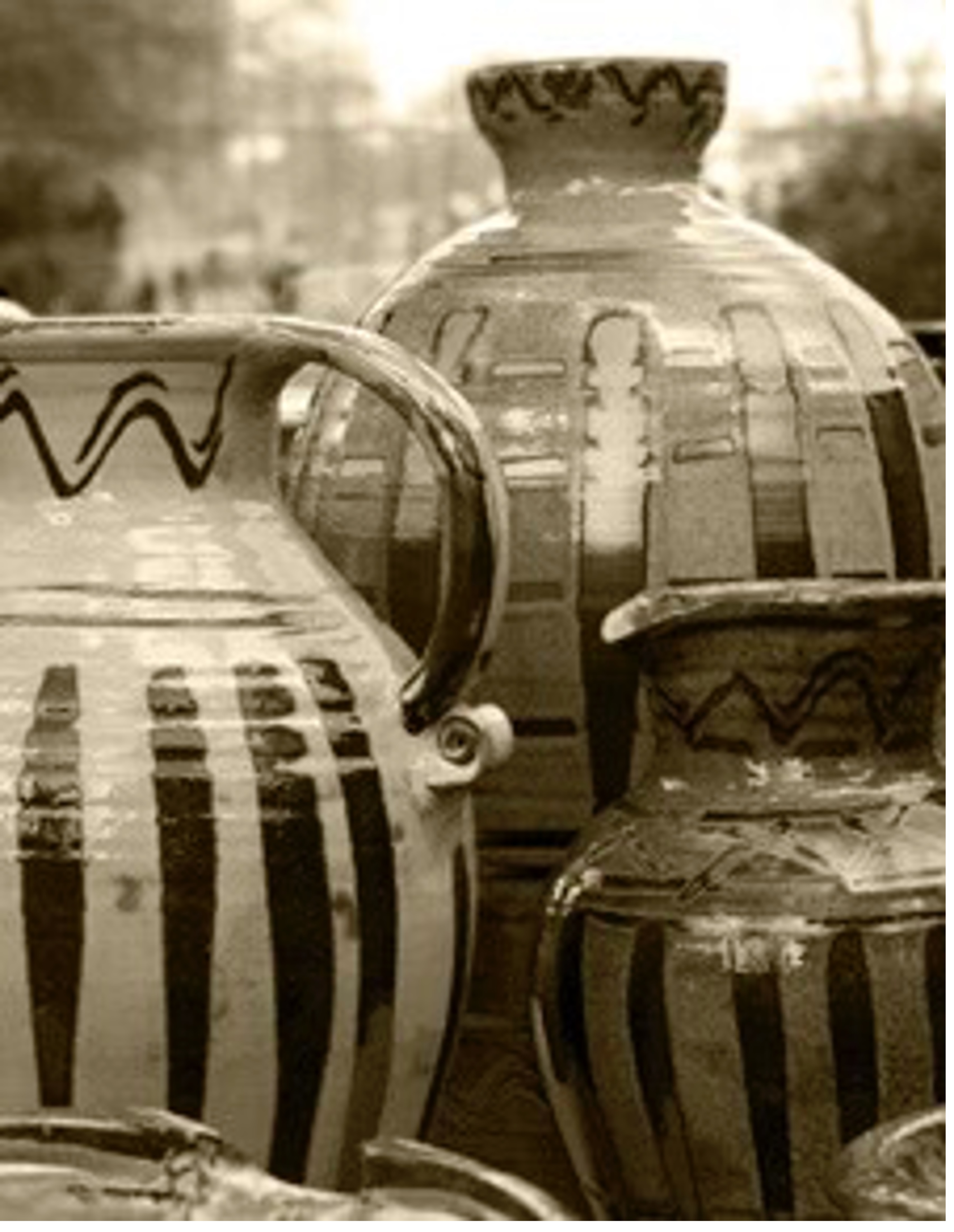This morning I was most surprised to see that the blackcurrants I was about to put on my breakfast had come from Peru. I was even more perplexed when I remembered that the blackcurrants had come via the local farm shop! Lots of other things in the fridge were equally well travelled.
The seventeenth century often shows us close links between the place where products and materials originated and their use. There’s quite a contrast with our present world where things travel outrageous distances, often too far, to reach us.
I was going to write a piece about how local produce was in the seventeenth century, however the first example I was going to use contradicted that straight away. I had come across reference to some very local pottery (now defunct) and I was going to give some examples from around the country.
A good example of the link between a place and what was produced can be seen in the pots made in North Devon (Bideford and Barnstaple). All the materials, from the clay and firewood to grit from local rivers were found in the local area making pottery production viable. Ironically, this is known, not particularly because of the careful preservation of historical information passed down from Devon itself, but the work of archaeologists in North America (James Town and Plymouth) who were studying the supplies from across the Atlantic in pots from south-west England. One of the largest records of the pottery produced is American, rather than English, as they had it last! I’d suggest that supplies to the new world in the seventeenth century were rather more important than my breakfast fruit from Peru!


You will find the kind of pottery made, slipware and sgraffitoware (scratched marks into the pot) ,very recognisable as reproduction items are common in re-enactment circles.
Of course, pottery came from many places, often as a result of similar convenient availability of the necessary materials. In fact many local potteries met local demand, until mass production of cheap and often higher quality pottery came along and undermined that local production. Here in Wibsey (Bradford) we had a local pottery which produced basic pottery. ‘Pot House Lane’ still celebrates this lost enterprise.
The basic pottery used by the masses in the seventeenth century, dubbed “peasant-ware” by the ceramics “experts” is very much a part of our seventeenth century houseware and means much more to us than the design alone.